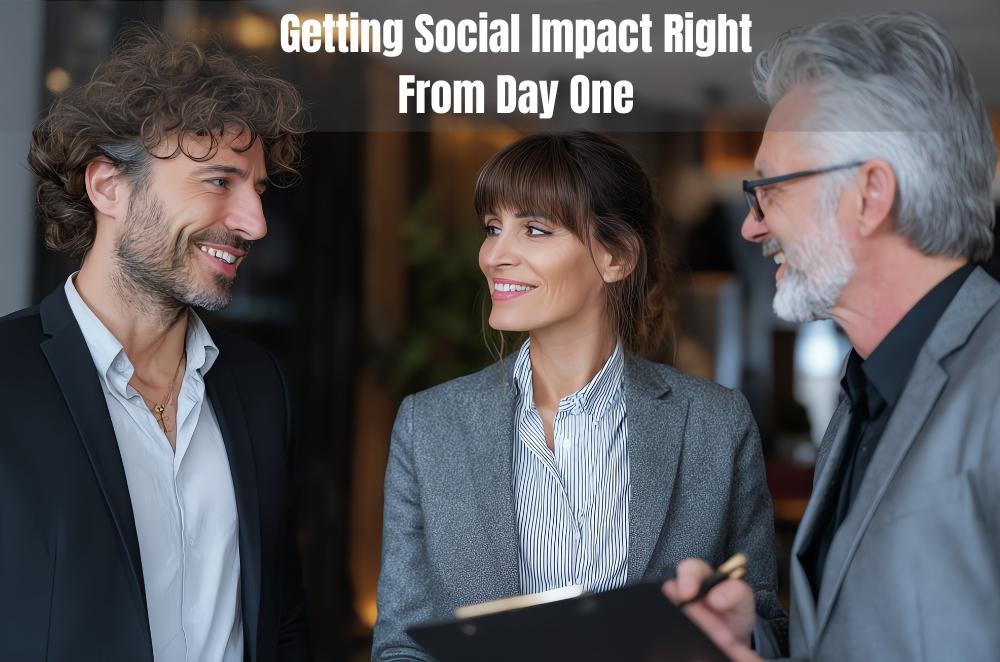Getting Social Impact Right From Day One

Projects succeed or stall on the back of community trust. We’ve all seen developments that tick every technical box yet still hit turbulence because people feel shut out of the process. A strong social impact assessment (SIA) cuts through that tension. It identifies who’s affected, what’s changing, and where mitigation can be anchored before issues tighten into opposition. When teams start scoping early, the SIA genuinely shapes design and avoids costly rework; when they leave it late, it turns into a scramble for credibility. The question many practitioners ask at the outset is who prepares a social impact assessment, and while job titles vary, capability, independence, and lived experience working with communities matter far more than formal roles.
What is a social impact assessment, really?
An SIA is a structured process for predicting and managing how a project will change people’s lives, neighbourhoods, and opportunities. It’s not just another planning report; it’s a grounded tool for understanding social risks and the levers available to reduce them.
Before the modelling and metrics, an SIA asks a few basic—but critical—questions: Who experiences change? How will those changes unfold over time? Which impacts need mitigation, and which offer opportunities? Good practitioners also understand that “the community” is never singular. People carry different histories, priorities, and tolerances for disruption, and the assessment must reflect those distinctions.
-
Identify who experiences change, not just site proximity
-
Map likely impacts across timelines and severity
-
Connect mitigation options to real budget decisions
-
Keep reporting simple, defensible, and reviewable
At this stage, teams often want clarity on workflow and sequencing. That makes social impact assessment steps an essential framing tool, especially when embedding SIA work inside governance instead of leaving it as a late-stage compliance exercise.
Once the foundation is set, the assessment expands into baseline studies, impact pathways, community input, and mitigation proposals. Part of the job is capturing nuance, not just data. Social impacts don’t follow neat lines—family routines change, local businesses adapt, and cultural patterns shift in ways that spreadsheets can’t fully capture. Strong SIAs bring that detail into the room early.
Who should lead and when?
The ideal SIA lead is brought in at the concept stage, not after design choices have hardened. When practitioners join too late, their ability to genuinely influence outcomes shrinks, and mitigation options become expensive or symbolic rather than substantive.
SIAs work best when led by a senior specialist—sometimes a planner, sometimes a consultant, sometimes a social researcher—who can integrate technical studies, community insights, and policy frameworks. They act as the translator between engineers, designers, councils, and affected communities. Independence is non-negotiable. Councils and stakeholders need confidence that the work isn’t massaged to fit a predetermined narrative.
-
Commission SIA before site selection becomes fixed
-
Budget for engagement that informs design decisions
-
Align mitigation to commitments you can actually deliver
Good practice also means acknowledging uncertainty. Social impacts aren’t perfectly predictable; they’re directional. What matters is showing how decisions respond to evidence and how monitoring will correct course where needed.
How do we make findings stick?
Many SIAs fail not because the analysis is weak but because the findings don’t translate into enforceable commitments. If the recommendations live only in a report appendix, the benefits evaporate once construction begins.
Effective teams embed their SIA outcomes into design tweaks, community benefit measures, access plans, and staged monitoring requirements. They also publish updates in plain language so people can see what’s happening—not just what was promised. Clarity builds defence against future disputes; vagueness invites distrust.
Integrating SIA with environmental and economic assessments also helps decision-makers see the full trade-off picture. Instead of siloed reporting, the impacts sit alongside habitat concerns, traffic modelling, and business case logic. That holistic view gives planners a more realistic understanding of what’s changing and why it matters.
Transparency matters most when sentiment shifts. Projects can lose momentum over rumours, miscommunication, or political shifts. When practitioners keep strong records of how input shaped outcomes, they hold the credibility needed to navigate those moments without escalation.
conclusion
Strong SIAs aren’t red tape; they’re insurance against friction and a blueprint for trust. They help projects find the balance between ambition and social reality, especially when delivered early enough to influence design rather than justify it. At the heart of the discipline is a simple idea: people experience the consequences of projects long after the ribbon-cutting. Understanding that early changes everything. For teams wanting a broader sense of why the discipline carries more weight than ever, Why Social Impact Matters offers a firm reminder of what’s at stake. Keeping people outcomes alongside engineering and financial logic ensures projects move forward with confidence—and stay resilient when conditions shift.
- Art
- Causes
- Crafts
- Dance
- Drinks
- Film
- Fitness
- Food
- Spiele
- Gardening
- Health
- Startseite
- Literature
- Music
- Networking
- Andere
- Party
- Religion
- Shopping
- Sports
- Theater
- Wellness




